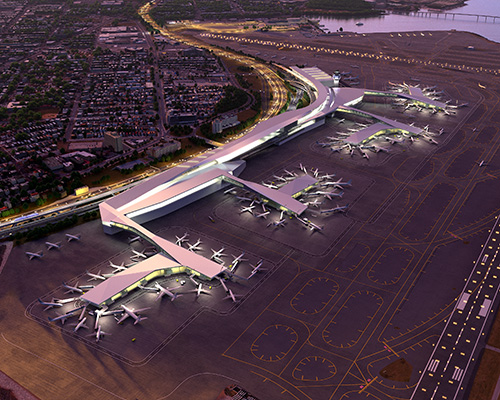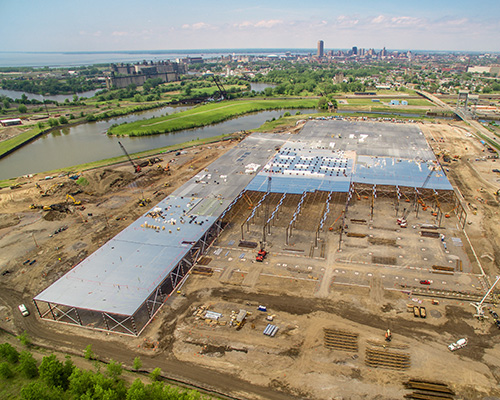

The Empire State was once a manufacturing powerhouse. Those days faded long ago, stranding large swaths of real estate, particularly upstate, and leaving behind the aging artifacts of industrial infrastructure.
In the past several years, Empire State Development and other state agencies have funded a variety of projects that are revitalizing and repurposing the infrastructure of the prior industrial age for the requirements of a post-industrial, digital age.
One of the biggest developments is the recently announced $4-billion plan to redevelop LaGuardia Airport. The airport, wedged between the northern end of the East River and the dense urban landscape of New York City’s borough of Queens, has been much maligned, most recently by Vice President Joe Biden, who called it a “third world” facility. Biden was at the table in July when New York Gov. Andrew Cuomo unveiled the project.
“We are transforming LaGuardia into a globally-renowned, 21st century airport that is worthy of the city and state of New York,” Cuomo said, calling it a metaphor for what “made this the Empire State in the first place.” The airport is in such poor shape that a two-part plan calls for parts of it to be torn down and rebuilt. The western half of the airport rebuild is being funded by a $4-billion public-private partnership of the Port Authority of New York and New Jersey and LaGuardia Gateway Partners, with about $2.2 billion coming from private investment through LGP and $1.8-billion coming from the Port Authority.
LGP will be responsible for designing, building, financing, operating, and maintaining the new terminal under a 35- year lease. Delta Air Lines is developing the eastern portion of the project on a parallel track with LGP.
The overall project calls for the disparate terminals at LaGuardia to be unified in a more accessible and fluid design that includes bridge-like passenger walkways that make better use of the airport’s scarce real estate and allows aircraft more room to taxi, which will reduce congestion and lower emissions from idling jets.
The state’s plans for LaGuardia are part of a larger vision overseen by the governor’s office that calls for upgrades at John F. Kennedy International Airport and at Republic Airport in Farmingdale on Long Island and Stewart International Airport in Newburgh, N.Y. ESD will guide the development of both sites through real estate broker Newmark Grubb Knight Frank.
In Brooklyn, state and city agencies have funded the Green Manufacturing Center, which is adding more than 1.8 million sq ft to the Brooklyn Navy Yard by converting three buildings that formerly housed Navy machine shops into a 220,000 sq ft multi- tenanted, LEED Silver-certified sites.
New York’s physical transformation is being mirrored by policy changes now working their way through the Public Service Commission’s regulatory process.
Cuomo’s Reforming the Energy Vision strategy calls for innovation and investment in clean energy. In June, the New York State Energy Research and Development Authority proposed a $1.5-billion investment over the next 10 years to support the development of large-scale renewable energy projects such as wind, solar and biomass powerplants.
The program is designed to replace the state’s renewable portfolio standard that expires at year end and to make the procurement of renewable resources in the state more cost-effective, Doreen Harris, manager of the large scale renewable program, says.
Overall, the program aims “to continue long-term commitment for cost-effective renewable energy sources at scale,” Harris says.


Post a comment to this article
Report Abusive Comment